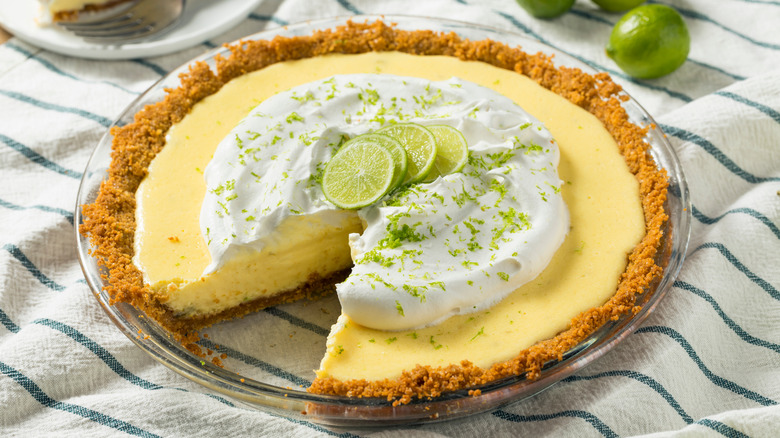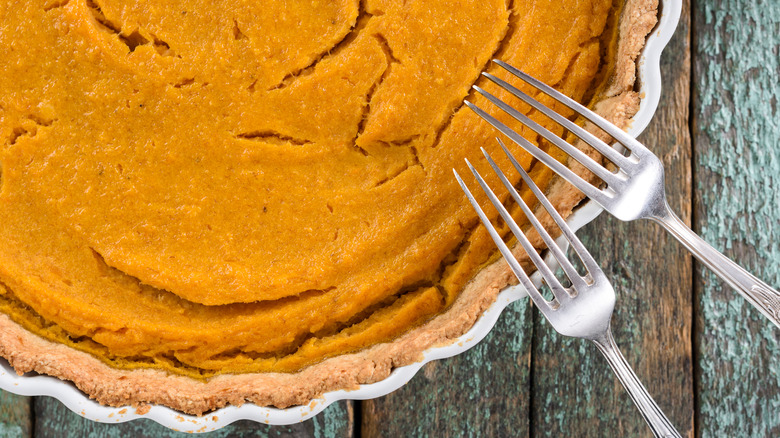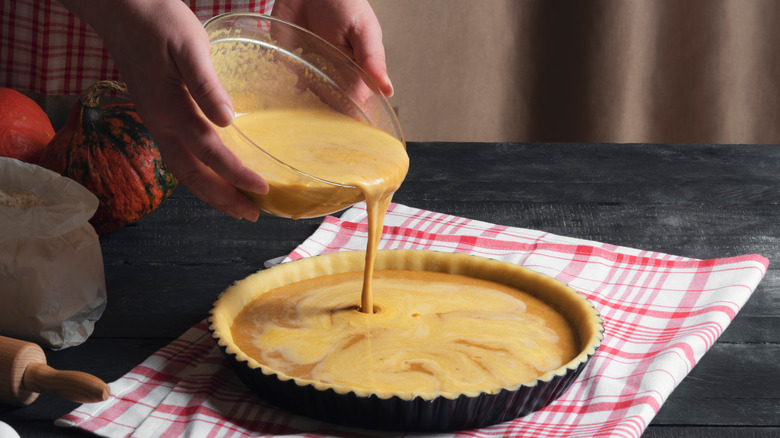How To Stop Your Pie From Splitting Down The Middle
When it comes to baking pies, most of the issues that arise are associated with the crust. There's a big emphasis on not overworking the dough, making sure the butter is well chilled and using hacks like adding liquor to produce a flakier crust. With so much effort focused on getting the crust just right, it's easy to neglect the filling, even though both are equally essential components of a pie. A perfectly baked crust can still be overshadowed by a filling that's too runny or has cracked down the middle.
While it's fairly evident that runny pies result from undercooking or using a faulty recipe that calls for too much liquid, cracked pies are more of an unpredictable occurrence — or at least that's how it seems. The truth is, as Southern Living shares, there are three main reasons pie filling can split; fortunately, all of them are entirely avoidable.
Why does pie filling split?
Ever notice that your apple pie never splits, but it always seems to be a problem with your pumpkin pie? Well, it's no coincidence, Southern Living says, because custard-based pies are more prone to splitting due to the fact that custard is made primarily with eggs. During the baking process, the proteins that make up the eggs tighten, allowing the filling to firm up. However, the longer the eggs spend in the oven, the more firm the custard will get, and cracks will begin to form when this happens.
Southern Living shares that cracks can also happen after the pie comes out of the oven. Transferring a hot pie to a cold refrigerator instead of letting it gradually cool will shock the filling. The abrupt change in temperature causes the egg proteins to tighten the same way they do when they get overcooked, resulting in a cracked pie.
Preventing cracked pie filling
While setting a timer is usually the best way to judge when something is ready to take out of the oven or cool enough to serve, for pies, there's a more foolproof way to go about it. Taste of Home recommends prematurely removing the pie from the oven — just before it's done rather than when it's fully set. Per the outlet's instructions, the best point is when the sides are already firm, but the middle still jiggles slightly when you shake it. The residual heat will be enough to bring the pie to the ideal consistency without risking any cracks.
Afterward, your pie can be cooled on a wire rack, but for good measure, Taste of Home suggests cooling the pie in the oven. Turn it off and leave the door open for at least 10 minutes to let the heat out. This will allow the pie to cool as gradually as possible, so no cracks aren't given a chance to form. A perfect pie crust combined with this baking method will result in a beautiful, split-free dessert.


